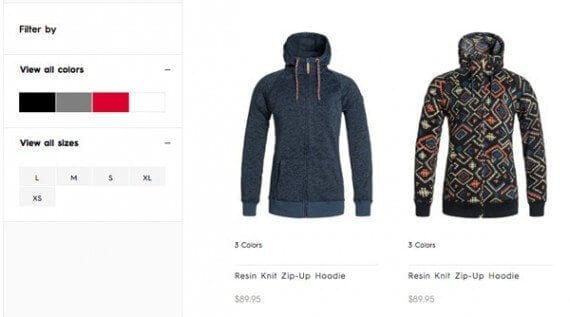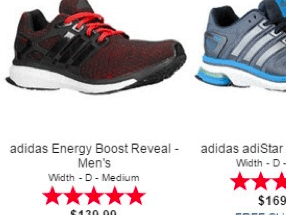When shoppers search on an ecommerce site, they are sharing insights about what they expect from the site and what they think of its products. Ecommerce marketers can learn from these insights, potentially improving conversion rates and marketing effectiveness.
To help discover these customer insights, look for these common site search reports.
Top Product Searches
Top product searches provide insights that boost sales and improve user experience. The most frequently searched product terms on an ecommerce site represent the most sought after products and describe how customers think about those products.
This simple insight creates opportunities for online retailers to provide a better shopping experience and increase sales.

Site search solutions often report top search queries. In this case, boots are included in two of the top searches.
To help demonstrate this point, imagine that an online retailer’s most popular search is for “boots.” This online retailer sells boots, so this might seem normal. But let’s try to answer some questions about why “boots” is the top search term.
- Is there an issue with site navigation? Could it be that the relatively generic term “boots” is popular because the site navigation doesn’t make finding boots obvious? Would a simple fix improve the site?
- Are “boots” also the best sellers? If the term “boots” is the most popular search, it should follow that boots are also among the most frequently sold items. If they are not best sellers, why not?
- Is marketing working? Are there boot-related marketing campaigns running? Could some new content like a recent blog post or YouTube video be driving interest in boots?
- What does the term “boots” mean to the customer? Does the retailer describe its products as “galoshes” or “mukluks” instead of “boots?” Could the customer be struggling with particular terms or not know what to call the product?
Queries with Few or No Results
Queries with few or no results show customer expectations. Learning what shoppers are searching for and not finding via search can help online retailers discover new product lines, better meet customer expectations, and sell more.

Customers expect this retailer to carry Traeger grills, which may mean there is already demand for Traeger products.
When a shopper searches for a product, but gets few or no results, we know at least three things.
First, the shopper is probably unsatisfied. Second, the shopper expected the store to carry this item. Third, there may already be demand for the item; adding it to the site would result in immediate sales without any additional marketing investment.
The third insight, that there may already be demand for a product, can significantly boost sales.
Trends Reveal Opportunities
When the frequency of particular, product-related search terms increases, it may be an indication that a retailer should stock more of the associated products.

Trends can identify growth or decline in a products popularity or tell us that something might be going on in the industry.
Conversely, if searches for a particular product are on a steady downward trend, it may be time to reconsider future purchases. And finally, monitoring trends can lead to some very powerful opportunities for both sales and improving customer experience.
An example might help. An online retailer in the northwestern U.S. noticed that searches for and sales of Equibrand ropes started to rapidly trend up on the morning of November 30, 2015. Wondering what might be going on, the retailer looked on Google and learned that the Equibrand rope factory in Granbury, Texas was burning to the ground.
Knowing that Equibrand ropes were likely to be in short supply, the retailer manually adjusted inventory levels, reserving some of the remaining Equibrand ropes in inventory for the store’s top customers.
Lastly, the retailer sent those top customers an email, letting them know about the fire and the reserved inventory. The loyal customers were hooked. They had a retailer looking out for them. And in all likelihood, they will buy all of the remaining Equibrand ropes.
The retailer was able to make just as many sales, but, because of monitoring trends, it was also able deepen its relationship with its top customers.
Filtered and Refined Searches
Filtered and refined searches identify key attributes and features. Ecommerce site search frequently includes search result filters, such as color or size, which shoppers can use to refine a product search. These refinements can offer insights about which product features or attributes are most important to shoppers.

Search filters allow shoppers to refine search queries and show merchants which product attributes are most important.
In turn, once the marketer for an ecommerce business knows which product features are most important, that information may inform on-site merchandising or drive new marketing copy or even content.
For example, if an online retailer specializing in electronic components learns that shoppers are most interested in input voltage when they search for battery-charging integrated circuits, that retailer can market around input voltage.

Identifying important product attributes may lead to more effective marketing.
With this knowledge, the store’s marketers might target different (and possibly more successful) keywords in pay-per-click advertising. The store might release a new YouTube video explaining the impact input voltage has on battery charging, or, perhaps, the store could publish a blog post about choosing battery-charging integrated circuits based on input voltage.
The filter insight opens up marketing opportunities.




